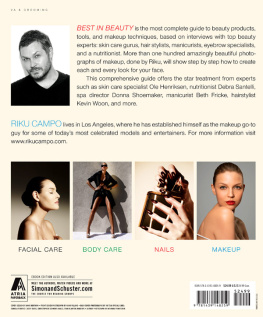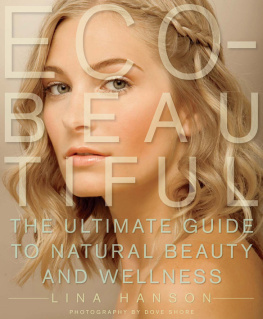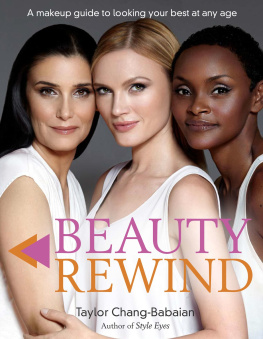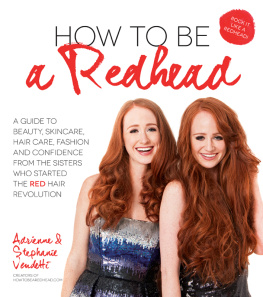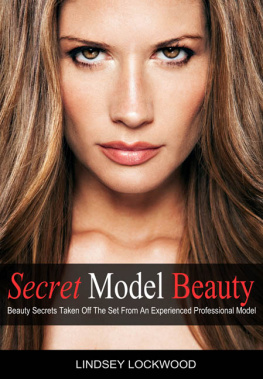Ole HenriksenSkin Care guru, Esthetician, and Spa Owner
When I moved to Los Angeles, I looked for a good esthetician with whom I could build a relationship and who would help solve my dry-skin problem. I had read an article about Ole Henriksen Spa in a beauty magazine in the early 1990s in which there was a beautiful photo of him and the British actress Patsy Kensit.
I sought out Ole, who instantly made an impression on me. He is one of the most positive people Ive ever encountered. His energy was just so high. There was such an aura around him, an aura of pure happiness and joy. I thought he was the best walking advertisement of his profession!
Ole introduced me to Maki, who has been the miracle worker on my skin. And now, after five years of being a client of Oles spa, not only does my skin look ten times better (no dry areas or flakes or one single milium), this Danish-born skin genius has also become my friend.
Here is what Ole says about skin care:
A professional esthetician is the best person to determine your skin type and its condition, but you can also analyze your skin yourself. This analysis will help you become your own skin care expert, allowing you to focus on treatment methods to elevate your skin to its best.
HOW TO ANALYZE YOUR SKIN
Three Things Needed to Analyze Your Skin Correctly
Bright daylight, as skin reveals itself best in this light
A large-handled mirror, ideally 25 centimeters or bigger in diameter
Your own beautiful face, free of makeup

TONERS FOR DRY, COMBINATION, AND OILY SKIN.
STEP 1
Take an inventory of your skin. The focus should be on texture, muscle tone, hydration, pigmentation, pores, and capillary strength.
STEP 2
Glide your hand across the four primary parts of your face: forehead, nose, cheeks, and chin.
How is your skin texture? Soft, smooth, or slightly coarse in areas, with occasional bumpiness?
How is your skin muscle tone? Firm, with defined facial contours, or lessdefined facial contours, showing signs of loosening, especially in the lower parts of the face and neckline?
Do you have fine expression lines or wrinkles?
How is the skin around your eyes? Taut, or is there some wrinkle formation?
Are you prone to fluid retention under your eyes?
How is your skin hydration level? Excessive and therefore oily, or dehydrated and therefore dry, or a combination?
How is the pigmentation of your skin? Perfectly uniform? Uneven in some facial zones, with brown spots or white spots, which signify pigment loss?
How are the pores in your skin? Mostly tight and invisible, which typifies dry skin, or more open and visible in the center of your face, which typifies oily skin?
How strong are the capillaries in your skin? This is basically signified by the number of visible capillaries. Frail capillaries typically show as redness, particularly in the cheeks, which indicates greater sensitivity to the elements and therefore sensitive skin. The right treatments can gradually strengthen the facial capillaries.
THE BASIC SKIN TYPES
The basic skin types are dry, oily, and combination. Most normal skin has both dry and oily parts, which makes it combination. Thats why I label my products for dry, oily, or normal/combination skin. Sensitive skin can be experienced by all skin types and age brackets.
DRY SKIN: BASIC FACTS
60 percent of skin is dry.
Dry skin is the closest thing to normal skin.
Dry skin is more common with fair skin than with darker skin.
When you pinch dry skin, it turns red.
Cold weather, too much showering, and air-conditioning in the winter are not good for dry skin; the skin might turn even drier, and flaky.
Dry skin is often sensitive or has sensitive areas, such as the eyelids, cheeks, and forehead.
Drinking six to eight glasses of purified water a day is the best way to moisturize the skin from the inside out, all year round.
OILY SKIN: BASIC FACTS
This skin type is predominantly oily, or at least 60 percent of its surface is. The T-zone is where the pores produce the most oil and pores tend toward blackhead formation. Sometimes these blackheads become inflamed and turn into pus-filled pimples.
Shiny skin is a frequent problem for people with oily skin. With the right care, based on purifying and antiseptic extracts, this skin type can be stabilized, resulting in tighter pores, fewer eruptions, and less shiny skin.
Sebum, produced by the sebaceous glands, is a natural skin lubricant. When produced in balanced proportions, it adds natural softness and protection to the skin, but when overproduced, as in oily or acneic skin, it causes clogged pores and possibly inflammation. So it can be a friend or an enemy of your skin.
Heredity, diet, and hormones (oily skin is more common, for example, among teenagers) can all cause skin to turn oily, but skin can also turn oily in later years due to bodily imbalances or the use of products that are too greasy. Extremely humid weather also contributes to making the oil and sebaceous glands even more active, which makes the skin look shiny and greasy.
Blackheads and whiteheads are common problems in oily skin, but you can get rid of them by using my A.M. and P.M. cleansing routine, focused on dislodging the pores of dirt and grime, including even the most stubborn pore clogging. But dont squeeze your pores; you might get rid of some of the blackheads or whiteheads, but if they are not eliminated properly (which can easily happen), bacteria will form in the pores and you will reinfect them, resulting in even more inflamed blemishes. Leave that kind of treatment to a professional esthetician or dermatologist, who will do a proper job of deep cleaning the skin. Try to go one to two times monthly to make rapid progress.
It is not a myth that people with oily skin dont get wrinkles as easily as people with dry skin; oily skin remains more flexible and resilient because of all the oil. Darker skin tends to be more oily than fair skin because darker skin has larger oil glands than fair skin does.
COMBINATION SKIN: BASIC FACTS
Combination skin means that some parts of your face are oily and typically have visible pores, mostly on the nose and cheeks, while the rest of the face is anywhere from normal to dry.
Seasonal changes frequently cause changes in combination skin: in the summer it becomes oilier and more prone to blackhead and whitehead formation in the T-zone, while the winter season causes it to become drier, especially in the cheek area.
SKIN CARE ROUTINES, BY SKIN TYPE
A simple daily morning and night skin care regimen should focus on:
Cleaning
Hydrating

